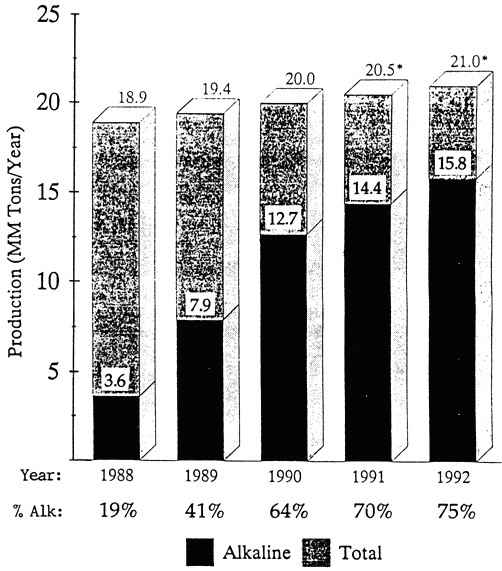

The bar graph below shows North American production of sized coated and uncoated freesheet (containing little or no groundwood) for the years 1988-1992, and indicates what proportion of each year's production is (or is expected to be) alkaline. Unsized freesheet is not included, but would probably give an even more optimistic picture if included.
The figures are annualized on the basis of estimated production during the last two weeks of each year, so they give a snapshot of the situation at year-end, rather than the actual production for the year. The graph was sent in by Tony Henle of the Paper Chemicals Group in Hercules, Inc., in December, 1989.

*Assuming growth at 2.4% (industry average).
A count of acid and alkaline mills has been made at the Newsletter office. It is not as accurate as it might be, but it is probably within 10% or 15%. It is hard for anyone to be accurate in generalizations about the paper industry concerning alkaline paper or even about fine paper, because some mills switch bark and forth between arid and alkaline papermaking for me or more brands, others make both technical and fine papers, or both groundwood and freesheet grades, and so on. So slippage is likely to come from the way the population of mills is defined. However, the following information on conversion was gathered by phone directly from the mills, so the number of mills converting is not overstated.
At any rate, by this count, there are at least 153 mills making fine paper in the U.S. About 45 are already alkaline, and about 40 more are slated for conversion or actually in trials. Of this 40, about 26 are due to convert this year, 1990. If all goes as planned, almost half of all fine paper mills will be alkaline by year's end.
The mills that have already converted produce a total of about 14,575 tons per day, or 324 tpd for the average mill. The mills slated for conversion produce an average of 664 tpd, or over twice as much. This shows that the smaller mills led the way, and the larger ones are now following their example.